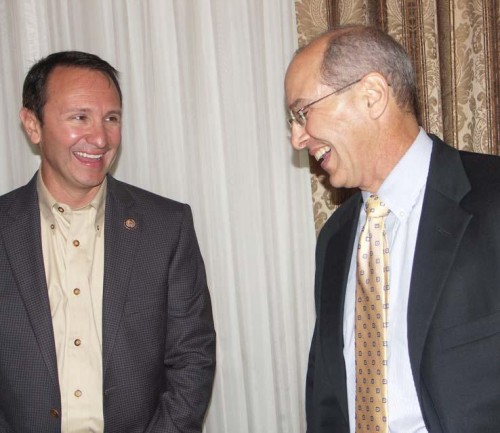
Landry seen as underdog to Boustany
February 7, 2012Joseph Clovis Autin
February 9, 2012(Columnist’s Note: Now that the Super Bowl has come and gone, I thought it would be appropriate to evaluate the event in non-sport terms. Here is a column I wrote several years ago. As we all know, the only great Super Bowl was when our blessed New Orleans Saints destroyed the evil Indianapolis Colts by the historic score of 31-17.)
Imagine:
Watching a wave approach the beach. The swell grows as it rolls across the surf. A juggernaut attacks the earth, and for a few brief moments the anticipation is overwhelming. Then it strikes, and there is calm until the next wave.
The Super Bowl is like a wave. Except it never reaches the beach. As it gets close your heart rate speeds up, your pupils dilute, your brain waves chart like a roller-coaster, which is good because the game almost never is.
My point? Get excited before the Super Bowl because the game will be about as exhilarating as watching water run out of your tub.
The truth is, the Super Bowl is all about money, about advertising, about audience share. It is also probably the greatest sham in sports history. Of course, there was the Bobby Riggs-Billy Jean King tennis astro-swindle in Houston a million years ago. And the Liston-Clay tap dance in Lewiston, Maine. The list could be lengthened, of course, but I doubt if anything could ever come close to matching the Super Bowl in overblown, melodramatic hype.
It starts with the name. A Super Bowl? Come on. You could count the good games on three fingers, the exciting ones on two.
Calling something super doesn’t make it extraordinary. Football, particularly pro football, is really an ordinary, uneventful game. To disguise this, drama is established early in a football telecast via the pre-game show. The camera pans the faces of the players during the national anthem; some are shown singing; some chewing gum; some scratching.
No matter. Drama is etched on every face n the players, the coaches, the fans, the analysts. The viewer is inexorably pushed towards the inevitable conclusion that the game is more dramatic than it really is.
Throw in the cheerleaders to add sex to the pot, stir briskly with skimpy halter tops and bikini bottoms, and, presto, you have concocted television’s hit soup: sex and violence. Add serious melodrama n that’s the role of the announcers n and, viola, Super Bowl courtboullion. Stirring the roux is the job of the pre-game analysis. This is the time n two to three hours n in which the announcers explain to the audience who is going to be the hero before he is the hero, and if he’s not, you can bet this month’s paycheck that in order to look intelligent the announcer will say that person is playing great whether he is or not. That’s not lying. That’s analysis.
Next comes the game. This is an event so tedious that no less than three announcers are needed for commentary. One tells you what happened, another tells you how it happened, and the third tells you what player he had breakfast with that day and how that player visits his bedridden mother every Tuesday and works with the Boys Club on Wednesdays.
Halftime. Definition: 45 minutes of mid-game analysis highlighted by a singfest, hopefully with a clothing malfunction. It is at this juncture that the analysts tell the viewers what they have just seen. Again.
Then comes the advertisers’ nightmare: the second half. By now the game is 93 to 2, the women and children have gone back to their daily chores, leaving only the men to endure the final one and a half hours of tripe.
But those numbers are misleading. The game, which has 15-minute quarters, lasts approximately three hours even though n get ready for this n there is only seven minutes of ball-in-motion action. Seven minutes of action. Seven minutes of running, catching, hitting. The rest is two hours and 53 minutes of unpiling, walking back to the huddle, huddling, walking back from the huddle, listening to the quarterback say, real husky like, “RED-ONE, BLUE-ONE, HUT HUT HUT.”
Then comes the five-second play. Unbelievably, a typical four-hour football telecast contains about .025 percent action. The rest is talk. Hype. Melodramatic mush that looks substantial, sounds substantial and is about as substantial as a helium balloon.
It’s truly insane. The Super Bowl has all the substance of a McCarthy investigation. Yet people watch. Millions. More people watched the Superbowl in 1969 than watched Neil Armstrong walk on the moon that same year.
Good thing Armstrong landed during the off season.






